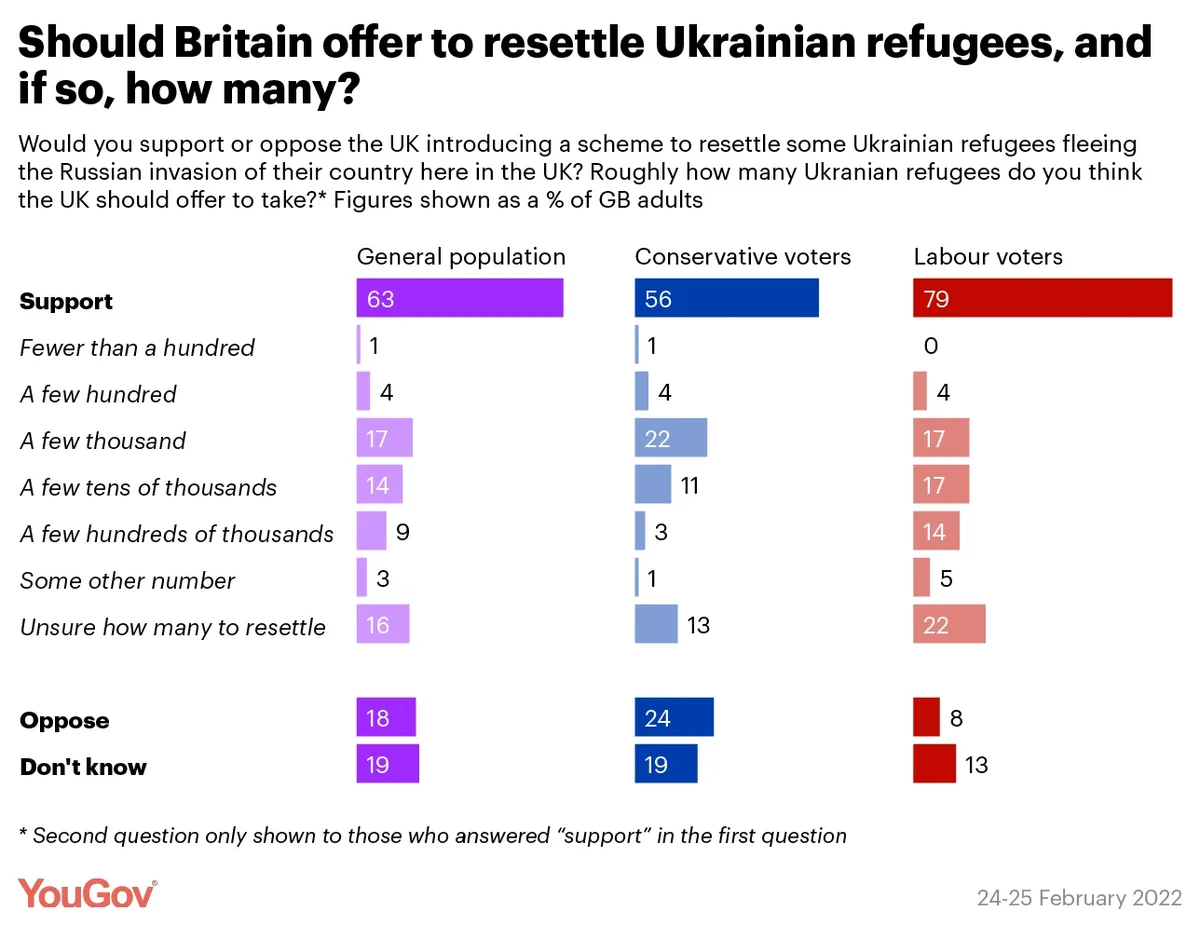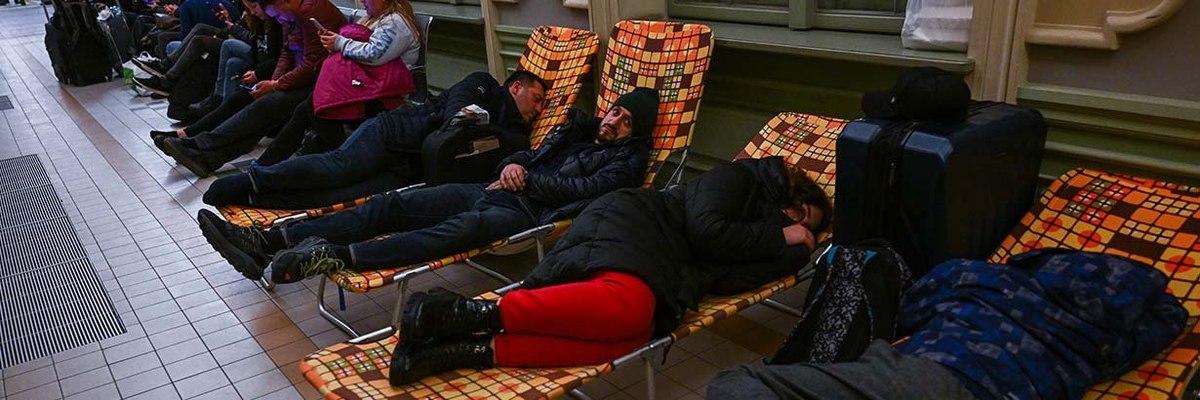Half say it is Britain’s moral obligation to offer asylum to Ukrainians fleeing the war
With the Russian invasion of Ukraine in full swing, it has been reported that by the UN refugee agency that 100,000 Ukrainians have been internally displaced by the conflict.
More are likely to flee as the conflict progresses, with the Polish deputy interior minister saying Poland needs to prepare for up to a million refugees. Other countries bordering Ukraine, like Romania, Slovakia, Moldova and Hungary, are also reportedly preparing for an influx of people.
What should Britain’s contribution to the humanitarian crisis be? Six in ten Britons (63%) say that they would support the UK introducing a scheme to resettle some Ukrainian refugees fleeing the Russian invasion. Only 18% are opposed.

On the more specific question of exactly how many Ukrainian refugees should be accepted, the most common answer was “a few thousand”, which a figure equivalent to 17% of the general population picked*, followed by “a few tens of thousands”, at 14%. Another 9% would be willing to welcome “a few hundreds of thousands”.
Labour voters are more willing to offer refuge to greater numbers of Ukrainians: 31% say the UK should accept a few tens or a few hundreds of thousands, compared to 14% of Conservatives.
Asked whether they believe the UK has a moral obligation to offer asylum to Ukrainian refugees, half of Britons (50%) say that we do. A third (32%) believe that we do not.
Two thirds of Labour voters say Britain has a moral obligation to offer asylum to Ukrainians fleeing the war. Conservative voters tend to think the country has no special obligation to do so, by 47% to 38%.
* Only those who said that they would support setting up a resettlement scheme for Ukrainian refugees were asked how many refugees should be resettled. For simplicity of understanding, the results above have been recalculated to show them as a percentage of the entire population










